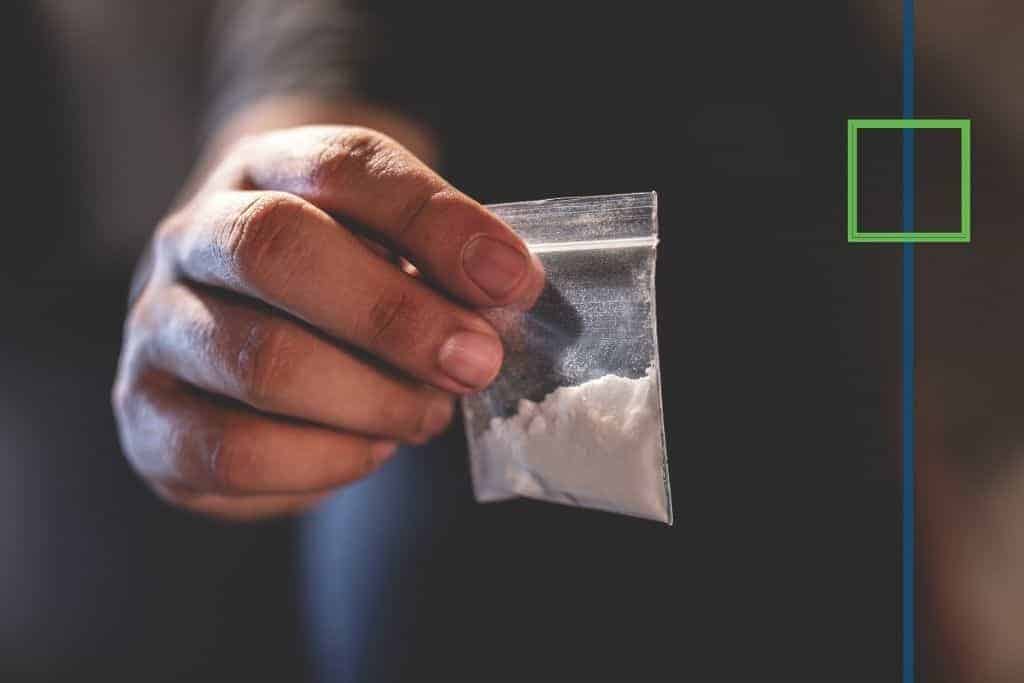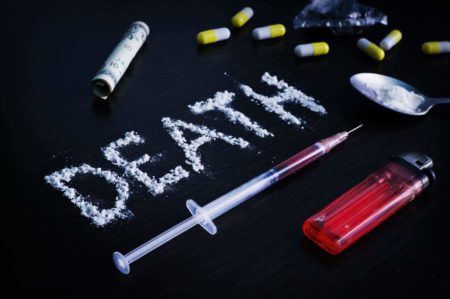What Is U-47700?
After a simple search online, Ryan Ainsworth and Grant Seaver ordered a bag of U-47700, a.k.a. “pink.” The powder arrived from Shanghai at their friend’s house, as planned. What happened next was not planned.
The two 13-year-old best friends shared many hobbies. From skiing to biking, to skateboarding, they did everything together. This new “hobby” they tried together would prove fatal. Ryan and Grant died within 48 hours of each other, both due to acute drug intoxication.
When the boys ordered the drug, it was legal to own in the United States, but with pink death tolls mounting, officials are moving to change this status. The “DEA has filed to have U-47700 listed as a banned substance, but that order hasn’t gone into effect yet.”

U-47700 is an addictive synthetic opioid. It was originally developed by a chemist at the Upjohn Company as part of research efforts to create new and improved painkillers. It is derived from morphine – but about eight times stronger – and the Food and Drug Administration never approved it for human use. And, as the two boys tragically discovered, pink is potentially lethal upon contact through skin or inhalation.
After decades of sitting on research shelves, the formula finally found its way onto the streets and into the hands of black market consumers. It’s made overseas and usually arrives from China or nearby countries. Pink now officially joins drugs like fentanyl in the deadly market of opioid abuse.
The drug creates a “sense of euphoria, numbness, sedation and slowed breathing.” Healthcare workers familiar with a pink report that it makes “people completely lose a sense of reality” and warn the drug is “causing psychotic disorders as we’ve never seen before.”
A white powder with chalky consistency, pink gets its nickname from its use, rather than its appearance. Also called “pinky” or “pinkie,” the drug is often snorted (meaning it’s inhaled through the nose). Users grow out their pinky fingernails to scoop up the powder, then snort the drug through a nostril.

Get Your Life Back
Find Hope & Recovery. Get Safe Comfortable Detox, Addiction Rehab & Dual Diagnosis High-Quality Care.
Hotline(844) 597-1011Pink Heroin
According to a press release on pink from CBS affiliate KUTV, here’s what you need to know:
What To Look For:
- White, chalky powder
- Also comes in liquid form; watch for dropper bottles and nasal inhalers
- Unmarked “stealth” delivery boxes – in some cases, these may have hand-written labels
- Boxes, vials, or plastic baggies labeled “Not for Human Consumption” or “For Research Purposes Only”
- Pay attention to any packages shipped to your house, especially those shipped from Asian countries
What To Do:
- U-47700 is extremely toxic, even in small doses.
- Exposure to U-47700 by either inhalation or skin contact can be fatal.
- If you believe you have encountered the drug, contact your local law enforcement agency immediately.
U-47700 Effects
U-47700 or “Pink” is abused for its opioid and narcotic-like effects and is swallowed, snorted, or injected. It is one of many synthetic designer drugs. Pink effects as reported by users are similar to the effects of opioids, which might include:
- Euphoria, feeling “high, and other psychoactive effects
- Sedation, relaxation, numbness
- Potent analgesia
- Severe, possibly fatal respiratory depression
- Pinpoint pupils
- Constipation
- Itching
- Drug tolerance, dependence, addiction
- Seizures
- Psychosis
- Fatal overdose
- Potent analgesia
One published review noted that patients that died after an overdose with U-47700 typically presented to the hospital with pulmonary edema (excess fluid in the lungs).
Physical Effects Of U-47700
The general head space of U-47700 is described by many as one of euphoria, relaxation, anxiety suppression, and pain relief. Its effects are considered by some to be similar to those produced by oxycodone.
- Pain relief
- Physical euphoria: This particular substance is considered to cause less physically intense euphoria as compared to morphine or diacetylmorphine (heroin). This sensation is described as moderate feelings of physical comfort, warmth, and physical euphoria which spreads throughout the body.
- Itchiness: This compound, like most opioids, tends to cause strong histamine reactions which cause the skin to feel itchy.
- Respiratory depression: Although it has not been formally studied, anecdotal reports suggest that respiratory depression is significantly stronger with this compound in comparison to other more common opioids such as heroin and morphine at relative doses. At low to moderate doses, this effect results in the sensation that the breath is slowed down mildly to moderately, but does not cause noticeable impairment. At high doses and overdoses, opioid-induced respiratory depression can result in shortness of breath, abnormal breathing patterns, semi-consciousness, or unconsciousness. Severe overdoses can result in a coma or death without immediate medical attention.

- Sedation: With high dosages, this compound causes considerably stronger sedation than oxycodone or hydrocodone.
- Constipation
- Cough suppression
- Difficulty urinating
- Pupil constriction
- Decreased libido
- Appetite suppression
Psychological Effects of U-47700
- Cognitive euphoria: This particular substance can be considered less intense in its cognitive euphoria when compared with that of morphine or diacetylmorphine (heroin) due to its short duration and structural differences. It is still, however, capable of extreme intensity and overwhelming bliss at heavier dosages with a low tolerance. The sensation itself can be described as a powerful and overwhelming feeling of emotional bliss, contentment, and happiness.
- Anxiety suppression
- Compulsive redosing: Due to the short duration of this substance and the addictive properties of opioids in general, there is a strong risk of compulsive redosing which is considered dangerous considering it is very corrosive to mucous membranes.
- Dream potentiation
Get Help. Get Better. Get Your Life Back.
Searching for Accredited Drug and Alcohol Rehab Centers Near You?
Even if you have failed previously and relapsed, or are in the middle of a difficult crisis, we stand ready to support you. Our trusted behavioral health specialists will not give up on you. When you feel ready or just want someone to speak to about therapy alternatives to change your life call us. Even if we cannot assist you, we will lead you to wherever you can get support. There is no obligation. Call our hotline today.
(844) 597-1011Methods Of U-47700/Pink Heroin Abuse
U-47700 is a synthetic opioid, meaning that it is man-made in a lab. It is an illegal drug in the United States and is around 7.5 times more potent than morphine. Although originally developed by a pharmaceutical company as an alternative to morphine in the late 1970s, it is not approved for medical use in any country in the world. People often buy and sell the drug online from international sources.
The drug often looks like a white or pink powder. It can be sold in baggies or made into counterfeit pills that look like prescription painkillers. Sometimes the drug may be sold in other formulations, such as a liquid form to be inhaled.
People abuse U-47700 in various ways, including by mouth, rectally, snorting, inhaling, and injecting.
U-47700 Overdose
Fatalities due to Pink (U-47700) in the United States join the growing incidence of drug overdose or deaths due to prescription opioids and synthetic designer drugs like “spice” and “bath salts.” The public using these street or Internet products can never know exactly what is in them, how much, or the degree of toxicity with use.
The Drug Enforcement Agency (DEA) reported at least 46 deaths linked to the use of U-47700 that occurred in 2015 and 2016. Fatalities have been reported in Arizona, New York, New Hampshire, Ohio, Texas, and Wisconsin, North Carolina, with multiple reports from state and local forensics laboratories. According to DEA, no other reports of use in the U.S. were found before 2015.
Those who abuse U-47700 may be at risk of addiction and substance abuse disorder, overdose, and death, similar to abuse of other narcotic substances such as heroin, prescription pain opioids, and designer opioids. This drug may be found in combination, knowingly or unknowingly, with other drugs of abuse bought on the streets such as heroin or fentanyl. It has also been confiscated as a separate product.

A toxicology case report was published in the Annals of Emergency Medicine that detailed events in which fentanyl and U-47700 were being sold misleadingly as the prescription opioid pain medication Norco (acetaminophen and hydrocodone) on the streets of Northern and Central California. In one patient who presented to the emergency room, naloxone (Narcan) was administered which reversed respiratory depression and pinpoint pupils. After additional chemical analysis, it was found the “Norco” contained hydrocodone, fentanyl, and U-47700.
How is “Pink Heroine” sold?
- U-47700 has been seized by law officials on the street in powder form and as tablets. Typically it appears as a white or light pinkish, chalky powder.
- It may be sold in glassine bags stamped with logos imitating heroin, in envelopes, and inside knotted corners of plastic bags. Labels on the products may state “not for human consumption” or “for research purposes only”, probably to avoid legal detection.
- Some “Pink” products have been sold to mimic bags of heroin or prescription opioid tablets.
- In Ohio, authorities seized 500 pills resembling a manufacturer’s oxycodone immediate-release tablets, but they were confirmed by chemical analysis to contain “Pink”.
- U-47700 has also been identified and sold on the Internet misleadingly as a “research chemical” at roughly $30 per gram.
First-class Facilities & Amenities
World-class High-Quality Addiction & Mental Health Rehabilitation Treatment
Rehab Centers TourRenowned Addiction Centers. Serene Private Facilities. Inpatient rehab programs vary.
Addiction Helpline(844) 597-1011Proven recovery success experience, backed by a Team w/ History of:
15+
Years of Unified Experience
100s
5-Star Reviews Across Our Centers
10K
Recovery Success Stories Across Our Network
- Low Patient to Therapist Ratio
- Onsite Medical Detox Center
- Comprehensive Dual-Diagnosis Treatment
- Complimentary Family & Alumni Programs
- Coaching, Recovery & Personal Development Events
U-47700 Withdrawal
As with other opioids, the chronic use of U-47700 can be considered moderately addictive with a high potential for abuse and is capable of causing psychological dependence among certain users. When addiction has developed, cravings and withdrawal symptoms may occur if a person suddenly stops their usage.
Tolerance to many of the effects of U-47700 develops with prolonged and repeated use. The rate at which this occurs develops at different rates for different effects, with tolerance to the constipation-inducing effects developing particularly slowly for instance. This results in users having to administer increasingly large doses to achieve the same effects.
After that, it takes about 3 – 7 days for the tolerance to be reduced to half and 1 – 2 weeks to be back at baseline (in the absence of further consumption). U-47700 presents cross-tolerance with all other opioids, meaning that after the consumption of U-47700 all opioids will have a reduced effect.
U-47700 withdrawal symptoms can be especially painful and emerge after 2-4 hours after the last dose administration. It is highly advisable not to become physically dependent on this substance, as physical dependence can develop in a short period.
The risk of fatal opioid overdoses rises sharply after a period of cessation and relapse, largely because of reduced tolerance. To account for this lack of tolerance, it is safer to only dose a fraction of one’s usual dosage if relapsing. It has also been found that the environment one is in can play a role in opioid tolerance. In one scientific study, rats with the same history of heroin administration were significantly more likely to die after receiving their dose in an environment not associated with the drug in contrast to a familiar environment.
U-47700 vs Fentanyl
This drug may be found in combination, knowingly or unknowingly, with other drugs of abuse bought on the streets such as heroin or fentanyl. It has also been confiscated as a separate product.
Since many patients don’t believe Fentanyl harbors significant addictive potentials like Heroin or other street drugs, Fentanyl has a higher likelihood of accidental and intentional abuse.
Fentanyl impacts the Central Nervous System (CNS) to a significant degree, causing excess amounts of dopamine to flood and chemically alter the brain over time. Due to these neurochemical changes, someone prescribed Fentanyl might become dependent on the drug and turn to illegal methods of getting it after exhausting their prescribed amount.
Once someone develops a tolerance to Fentanyl’s Narcotic properties, he or she will depend on it to feel “normal,” requiring more of the drug to reach the previous sensations.
Fentanyl use can escalate from abuse to full-blown addiction rapidly. Thanks to the Diagnostic and Statistical Manual of Mental Disorders criteria for diagnosing substance use disorder, healthcare professionals can pinpoint problematic behavior like building a tolerance or suffering withdrawal symptoms.
As the National Institute on Drug Abuse states, it is very possible for a person to overdose on fentanyl. An overdose occurs when a drug produces serious adverse effects and life-threatening symptoms. When people overdose on fentanyl, their breathing can slow or stop. This can decrease the amount of oxygen that reaches the brain, a condition called hypoxia. Hypoxia can lead to a coma and permanent brain damage, and even death.
World-class, Accredited, 5-Star Reviewed, Effective Addiction & Mental Health Programs. Complete Behavioral Health Inpatient Rehab, Detox plus Co-occuring Disorders Therapy.
CALL(844) 597-1011End the Addiction Pain. End the Emotional Rollercoaster. Get Your Life Back. Start Drug, Alcohol & Dual Diagnosis Mental Health Treatment Now. Get Free No-obligation Guidance by Substance Abuse Specialists Who Understand Addiction & Mental Health Recovery & Know How to Help.
U-47700 Dangerous interactions
Many psychoactive substances that are reasonably safe to use on their own can suddenly become dangerous and even life-threatening when combined with certain other substances. The following list provides some known dangerous interactions (although it is not guaranteed to include all of them).
- Alcohol: Both substances potentiate the ataxia and sedation caused by the other and can lead to unexpected loss of consciousness at high doses. Place affected patients in the recovery position to prevent vomit aspiration from excess. Memory blackouts are likely
- Amphetamines: Stimulants increase respiration rate which allows for a higher dose of opiates than would otherwise be used. If the stimulant wears off first then the opiate may overcome the user and cause respiratory arrest.
- Benzodiazepines: Central nervous system and/or respiratory-depressant effects may be additively or synergistically present. The two substances potentiate each other strongly and unpredictably, very rapidly leading to unconsciousness. While unconscious, vomit aspiration is a risk if not placed in the recovery position blackouts/memory loss are likely.
- Cocaine: Stimulants increase respiration rate, which allows for a higher dose of opiates than would otherwise be used. If the stimulant wears off first then the opiate may overcome the patient and cause respiratory arrest.
- DXM: Generally considered to be toxic. CNS depression, difficulty breathing, heart issues, and liver toxicity have been observed. Additionally if one takes DXM, their tolerance of opiates goes down slightly, thus causing additional synergistic effects.
- GHB/GBL: The two substances potentiate each other strongly and unpredictably, very rapidly leading to unconsciousness. While unconscious, vomit aspiration is a risk if not placed in the recovery position
- Ketamine: Both substances bring a risk of vomiting and unconsciousness. If the user falls unconscious while under the influence there is a severe risk of vomit aspiration if they are not placed in the recovery position.
- MAOIs: Coadministration of monoamine oxidase inhibitors (MAOIs) with certain opioids has been associated with rare reports of severe adverse reactions. There appear to be two types of interaction, an excitatory and a depressive one. Symptoms of the excitatory reaction may include agitation, headache, diaphoresis, hyperpyrexia, flushing, shivering, myoclonus, rigidity, tremor, diarrhea, hypertension, and tachycardia, seizures, and coma. Death has occurred in some cases.
- MXE: MXE can potentiate the effects of opioids but also increases the risk of respiratory depression and organ toxicity.
- Nitrous: Both substances potentiate the ataxia and sedation caused by the other and can lead to unexpected loss of consciousness at high doses. While unconscious, vomit aspiration is a risk if not placed in the recovery position. Memory blackouts are common.
- PCP: PCP may reduce opioid tolerance, increasing the risk of overdose.
- Tramadol: Increased risk of seizures. Tramadol itself is known to induce seizures and it may have additive effects on seizure threshold with other opioids. Central nervous system- and/or respiratory-depressant effects may be additively or synergistically present.
- Grapefruit: While grapefruit is not psychoactive, it may affect the metabolism of certain opioids. Tramadol, oxycodone and fentanyl are all primarily metabolized by the enzyme CYP3A4, which is potently inhibited by grapefruit juice. This may cause the drug to take longer to clear from the body. it may increase toxicity with repeated doses. Methadone may also be affected. Codeine and hydrocodone are metabolized by CYP2D6. People who are on medicines that inhibit CYP2D6, or that lack the enzyme due to a genetic mutation will not respond to codeine as it can not be metabolized into its active product: morphine.
Treatment For Heroin Addiction
Treatment for Heroin Addiction includes medical treatments and behavioral therapies. For a treatment to be effective, it’s important to match the best treatment approach to meet the particular needs of each patient. Medicines are being developed to help with the withdrawal process. The FDA approved lofexidine, a non-opioid medicine designed to reduce opioid withdrawal symptoms.
Medicines to help people stop using heroin include Buprenorphine and Methadone. They work by binding to the same opioid receptors in the brain as heroin, but more weakly, reducing cravings and withdrawal symptoms. Another treatment is naltrexone, which blocks opioid receptors and prevents opioid drugs from having an effect.
A NIDA study found that once treatment is initiated, both a buprenorphine/Naloxone combination and an extended-release Naltrexone formulation are similarly effective in addiction. Because full detoxification is necessary for treatment with naloxone, initiating treatment among active users was difficult, but once detoxification was complete, both medications had similar effectiveness.

Behavioral therapies for Heroin Addiction include methods called Cognitive-Behavioral therapy and contingency management. Cognitive-Behavioral Therapy helps modify the patient’s drug-use expectations and behaviors and helps effectively manage triggers and stress. Contingency Management provides motivational incentives, such as vouchers or small cash rewards for positive behaviors such as staying drug-free. These Behavioral Treatment approaches are especially effective when used along with medicines.
Experience Transformative Recovery at We Level Up Treatment Centers.
See our authentic success stories. Get inspired. Get the help you deserve.
Start a New Life
Begin with a free call to an addiction & behavioral health treatment advisor. Learn more about our dual-diagnosis programs. The We Level Up Treatment Center Network delivers recovery programs that vary by each treatment facility. Call to learn more.
- Personalized Care
- Caring Accountable Staff
- World-class Amenities
- Licensed & Accredited
- Renowned w/ 100s 5-Star Reviews
We’ll Call You
Sources
[2] DEA Schedules Deadly Synthetic Drug U-47700. Accessed July 25, 2021 at DEA.gov
[3] Synthetic opioid nicknamed ‘pink’ blamed for deaths of two 13-year-old Utah boys. The Washington Post.


